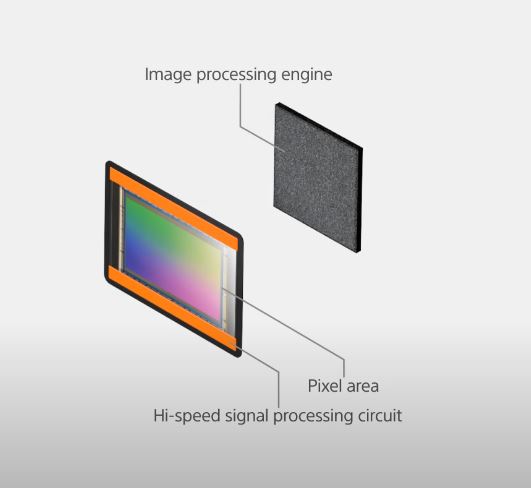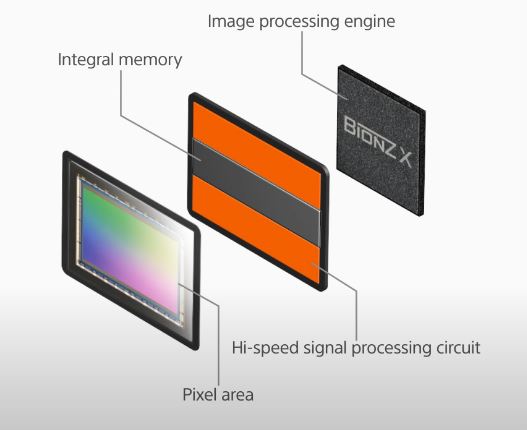After the Announcement of the Nikon Z camera: I am getting lots of questions to explain what actually stacked camera sensor by many of my users.
Explain the steps in a sensor in the best possible and simplest way possible. But before knowing the advantages of a stacked CMOS sensor, we have to understand what a conventional CMOS sensor actually does and why we need that CMOS sensor.

A conventional CMOS sensor captures the image and then through the circuit board bus or you can say via wires it transfers its entire data to the image processor unit. So the capturing and transferring process takes a lot of time and it affects the readout speed of the sensor. To resolve the issue and to make digital camera sensors faster and almost free from the rolling shutter effect, camera makers added a memory layer integrated with an arithmetic layer or you can say signal processing unit.

The memory and signal processing unit is attached to the sensor, and you can say it acts as a buffer between the sensor and the image processor unit. It captures all the data as fast as possible since it is being attached to the sensor and hence the readout speed of the sensor increases dramatically when the data is transferred in no time. Once the data is grabbed by the second layer, it is now transferred to the image processing unit of the camera for further processing.
Hence, adding a second layer improves the readout speed of the camera. As well as since the readout speed is improved, the camera becomes almost free from the rolling shutter effect.

So this is the main advantage of a stacked CMOS sensor: to improve the readout speed of the camera. The stacked technology doesn’t help the camera sensor improve its image quality in any way. It is just a tool to upskill the readout speed which in turn reduces the rolling shutter effect.
See more about the latest Nikon Z8 stacked CMOS Sensor based camera






